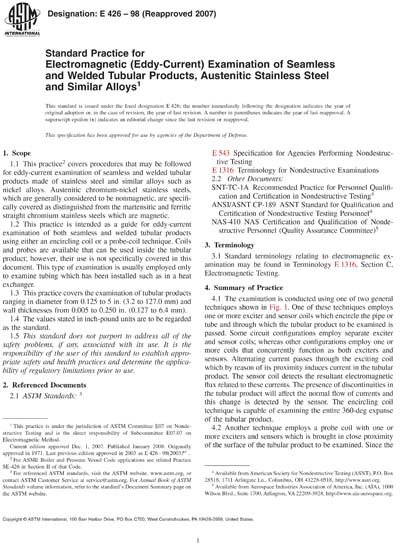Historical
ASTM E426-98(2007)
Standard Practice for Electromagnetic (Eddy-Current) Examination of Seamless and Welded Tubular Products, Austenitic Stainless Steel and Similar Alloys
1.1 This practice covers procedures that may be followed for eddy-current examination of seamless and welded tubular products made of stainless steel and similar alloys such as nickel alloys. Austenitic chromium-nickel stainless steels, which are generally considered to be nonmagnetic, are specifically covered as distinguished from the martensitic and ferritic straight chromium stainless steels which are magnetic.
1.2 This practice is intended as a guide for eddy-current examination of both seamless and welded tubular products using either an encircling coil or a probe-coil technique. Coils and probes are available that can be used inside the tubular product; however, their use is not specifically covered in this document. This type of examination is usually employed only to examine tubing which has been installed such as in a heat exchanger.
1.3 This practice covers the examination of tubular products ranging in diameter from 0.125 to 5 in. (3.2 to 127.0 mm) and wall thicknesses from 0.005 to 0.250 in. (0.127 to 6.4 mm).
1.4 The values stated in inch-pound units are to be regarded as the standard.
1.5 This standard does not purport to address all of the safety problems, if any, associated with its use. It is the responsibility of the user of this standard to establish appropriate safety and health practices and determine the applicability of regulatory limitations prior to use.
ASTM International [astm]

